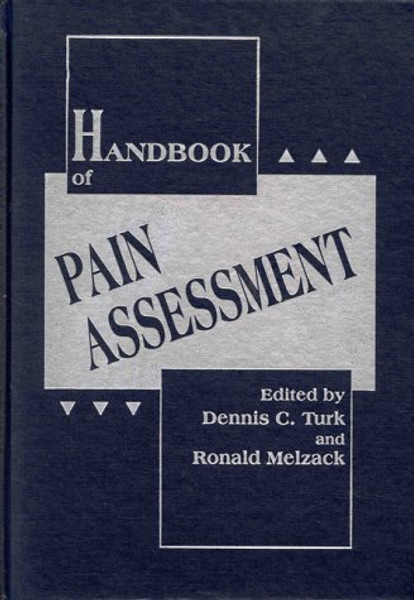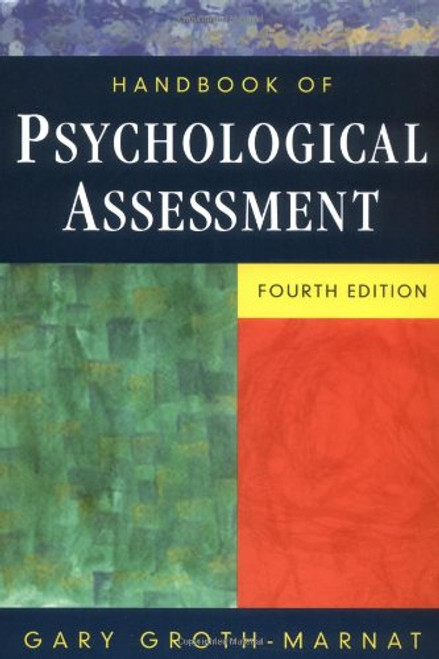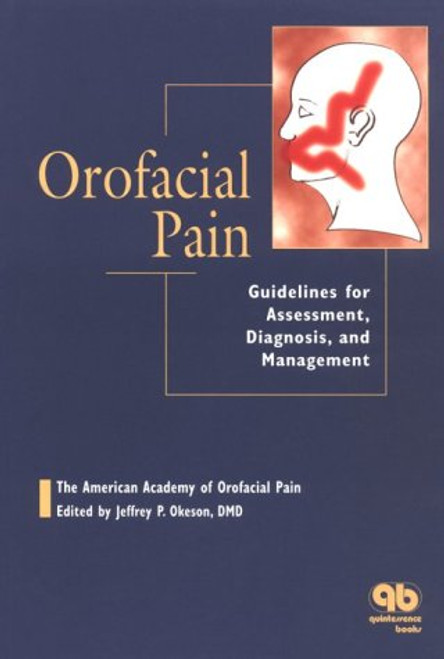Product Overview
Many factors affect how someone responds to the seemingly simple question How much does it hurt? . For every individual, a wide range of issues--from cultural, economic, social, demographic, and environmental factors, to the person's psychological state, personal history, situation, and his or her interpretation of the symptoms, as well as physical factors--influence the perception of pain as well as the response to treatment.
In this volume, an outstanding group of authorities--a veritable who's who of pain assessment--provide a comprehensive overview of the most current methods for assessing pain. They describe the available instruments and procedures, review their limitations and advantages, and provide practical information and guidelines to assist clinicians in selecting the most appropriate assessment methods for diverse populations. Designed for hands-on usefulness, the Handbook includes actual copies of the most important and useful assessment instruments and procedures that can be used by the reader.
Organized into six sections, the book first addresses medical, dental, and physical examination procedures for the most commonly reported pain. Chapters cover recent advances in assessment based on the important issues establishing impairment and disability and evaluate the new field of ergonomics related to pain. The second section focuses on the methods and instruments to quantify pain using self-report and psychophysiological strategies. Devoted to assessment of the individual experience of pain, chapters in the third section discuss the use of traditional psychological methods, the most appropriate instruments designed to assess the significant cognitive factors, and ways of ascertaining the impact of pain on the individual sufferer's life.
Behavioral assessment of pain is covered in the fourth section, while the fifth addresses special topics such as pain assessment in children and the elderly, and specific assessment issues for acute pain, cancer pain, and chronic headaches. The final section addresses important methodological topics including psychometrics, epidemiology and survey methods, and classification of patients based on comprehensive assessment findings.
Handbook Of Pain Assessment provides a comprehensiveness of coverage and a diversity of expert contributors not available in any other volume. It is an invaluable resource for all health professionals who are concerned about the assessment and measurement of pain including physicians, psychologists, nurses, physical therapists, occupational therapists, social workers, pharmacists, chiropractors, and dentists. The book will also be of interest to clinical investigators and to students in the health professions.
In this volume, an outstanding group of authorities--a veritable who's who of pain assessment--provide a comprehensive overview of the most current methods for assessing pain. They describe the available instruments and procedures, review their limitations and advantages, and provide practical information and guidelines to assist clinicians in selecting the most appropriate assessment methods for diverse populations. Designed for hands-on usefulness, the Handbook includes actual copies of the most important and useful assessment instruments and procedures that can be used by the reader.
Organized into six sections, the book first addresses medical, dental, and physical examination procedures for the most commonly reported pain. Chapters cover recent advances in assessment based on the important issues establishing impairment and disability and evaluate the new field of ergonomics related to pain. The second section focuses on the methods and instruments to quantify pain using self-report and psychophysiological strategies. Devoted to assessment of the individual experience of pain, chapters in the third section discuss the use of traditional psychological methods, the most appropriate instruments designed to assess the significant cognitive factors, and ways of ascertaining the impact of pain on the individual sufferer's life.
Behavioral assessment of pain is covered in the fourth section, while the fifth addresses special topics such as pain assessment in children and the elderly, and specific assessment issues for acute pain, cancer pain, and chronic headaches. The final section addresses important methodological topics including psychometrics, epidemiology and survey methods, and classification of patients based on comprehensive assessment findings.
Handbook Of Pain Assessment provides a comprehensiveness of coverage and a diversity of expert contributors not available in any other volume. It is an invaluable resource for all health professionals who are concerned about the assessment and measurement of pain including physicians, psychologists, nurses, physical therapists, occupational therapists, social workers, pharmacists, chiropractors, and dentists. The book will also be of interest to clinical investigators and to students in the health professions.






